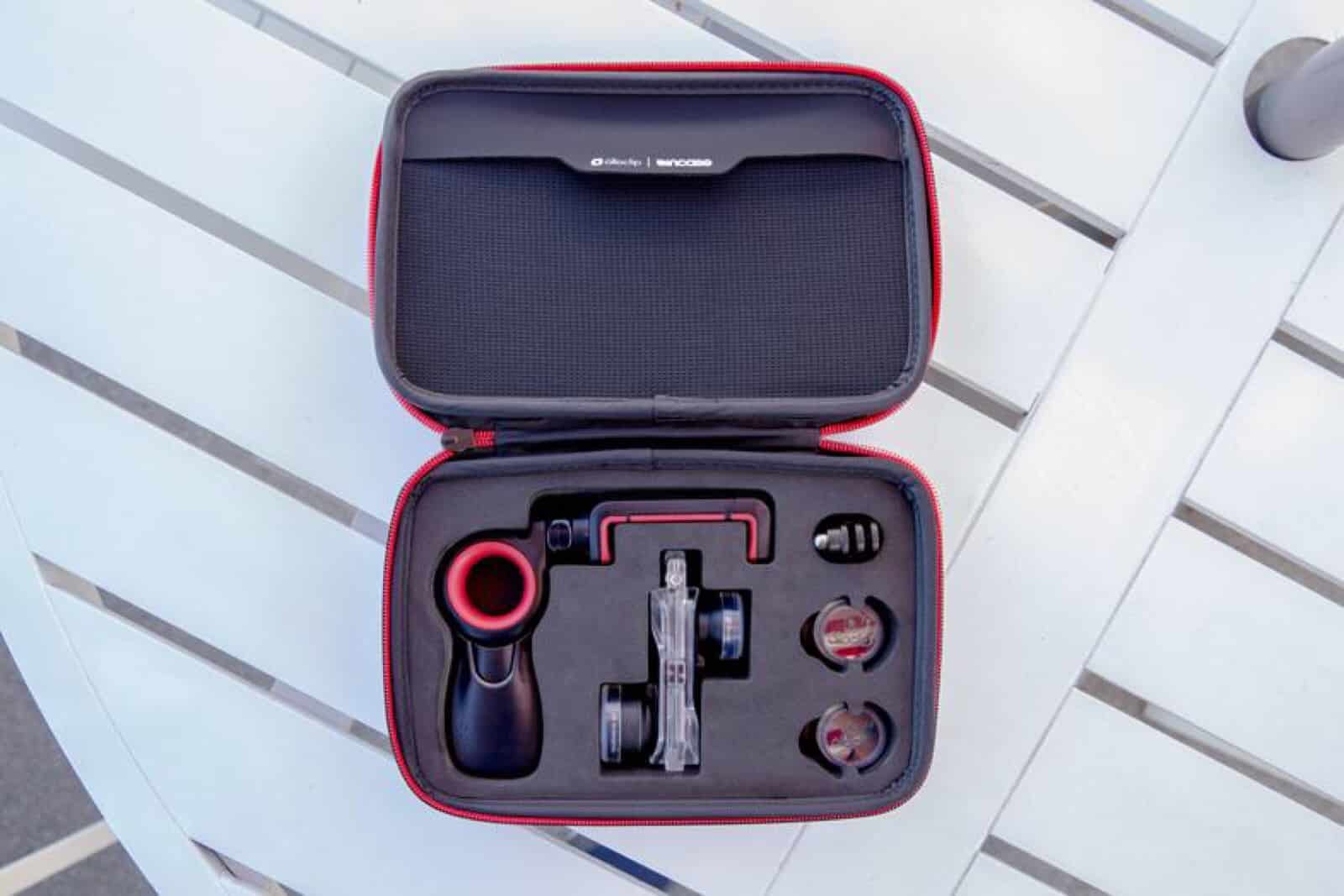If you specialize in iPhone videography, you’ll want to check out olloclip’s new product. It’s called Filmer’s Kit, and it’s being sold exclusively in Apple Stores around the world and online.

Filmer’s Kit
The Filmer’s Kit includes:
- olloclip Core Lens Set (fisheye, super-wide, macro 15x lens)
- olloclip Active Lens Set (telephone and ultra-wide lens)
- olloclip Pivot articulating mobile video grip
- Incase/olloclip carry case
Incase partnered with olloclip to build a custom carrying case for these tools, which you can quickly stick in a bag to carry to your video shoot. The Kit is US$199 and LIMITED EDITION, and with less than 2,000 units, they’ve probably sold out by the time you read this. But you can watch a video:
